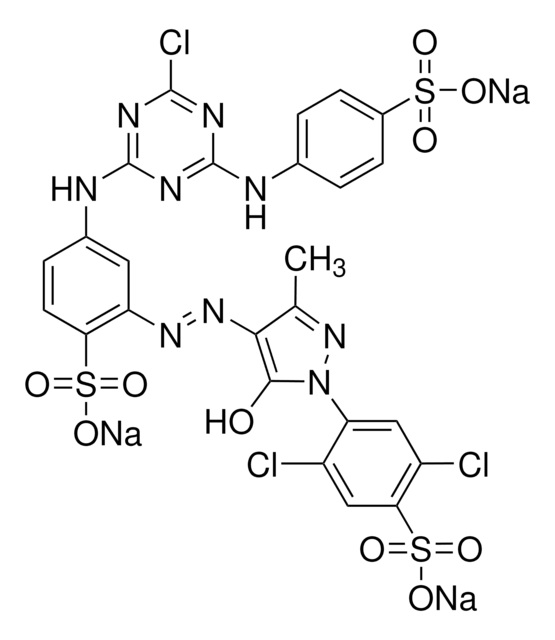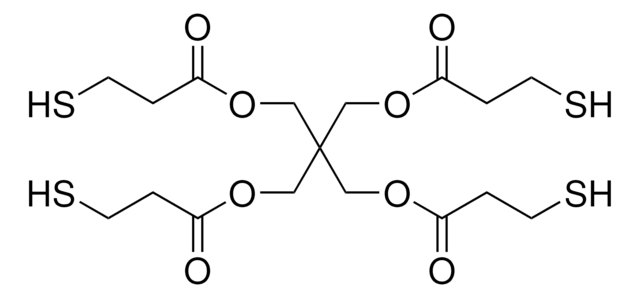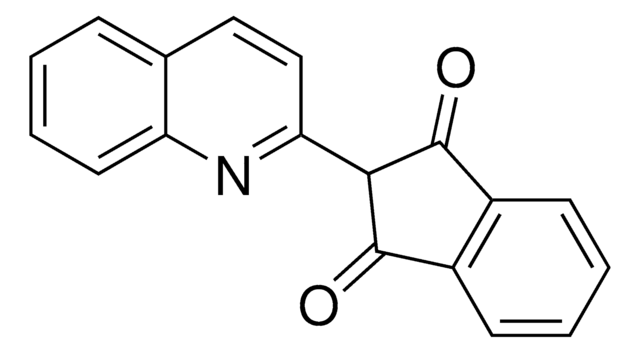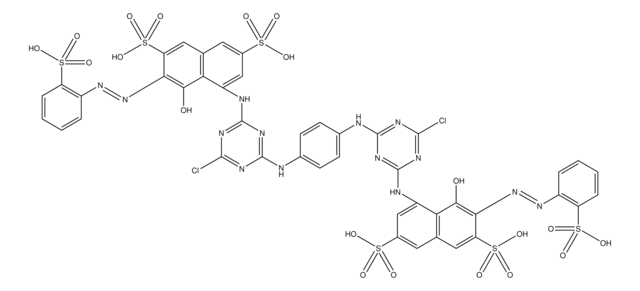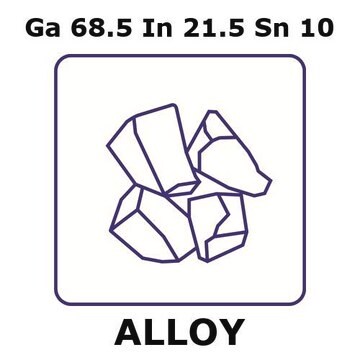201375
Brilliant Yellow
Dye content ≥50 %
Sinónimos:
Direct Yellow 4
About This Item
Productos recomendados
form
powder
composition
Dye content, ≥50%
technique(s)
titration: suitable
visual transition interval
6.5-8.0, orange to red-orange
λmax
497 nm at 0.1 N in NaOH
ε (extinction coefficient)
≥37000 at 260-268 nm
≥37000 at 486-494 nm
application(s)
diagnostic assay manufacturing
hematology
histology
storage temp.
room temp
SMILES string
[Na+].[Na+].Oc1ccc(cc1)\N=N\c2ccc(\C=C\c3ccc(cc3S([O-])(=O)=O)\N=N\c4ccc(O)cc4)c(c2)S([O-])(=O)=O
InChI
1S/C26H20N4O8S2.2Na/c31-23-11-7-19(8-12-23)27-29-21-5-3-17(25(15-21)39(33,34)35)1-2-18-4-6-22(16-26(18)40(36,37)38)30-28-20-9-13-24(32)14-10-20;;/h1-16,31-32H,(H,33,34,35)(H,36,37,38);;/q;2*+1/p-2/b2-1+,29-27+,30-28+;;
InChI key
YLDIUICHQPKMNH-MAPAHAHLSA-L
¿Está buscando productos similares? Visita Guía de comparación de productos
General description
Application
Storage Class
11 - Combustible Solids
wgk_germany
WGK 3
flash_point_f
Not applicable
flash_point_c
Not applicable
ppe
Eyeshields, Gloves, type N95 (US)
Certificados de análisis (COA)
Busque Certificados de análisis (COA) introduciendo el número de lote del producto. Los números de lote se encuentran en la etiqueta del producto después de las palabras «Lot» o «Batch»
¿Ya tiene este producto?
Encuentre la documentación para los productos que ha comprado recientemente en la Biblioteca de documentos.
Los clientes también vieron
Nuestro equipo de científicos tiene experiencia en todas las áreas de investigación: Ciencias de la vida, Ciencia de los materiales, Síntesis química, Cromatografía, Analítica y muchas otras.
Póngase en contacto con el Servicio técnico